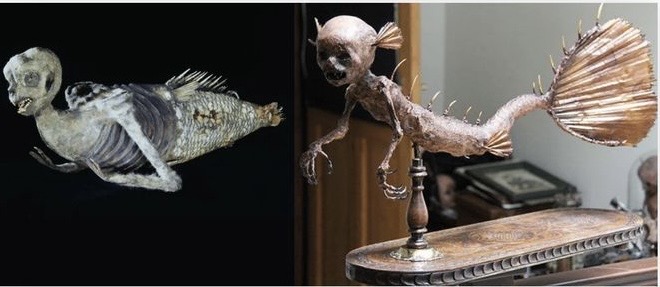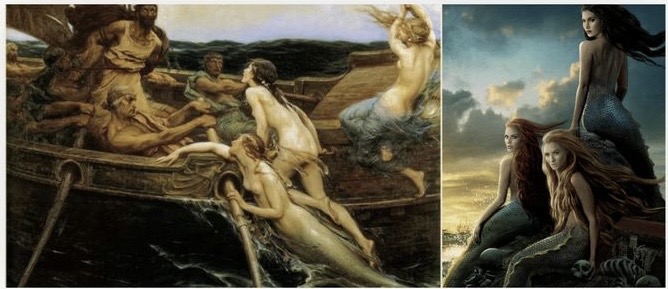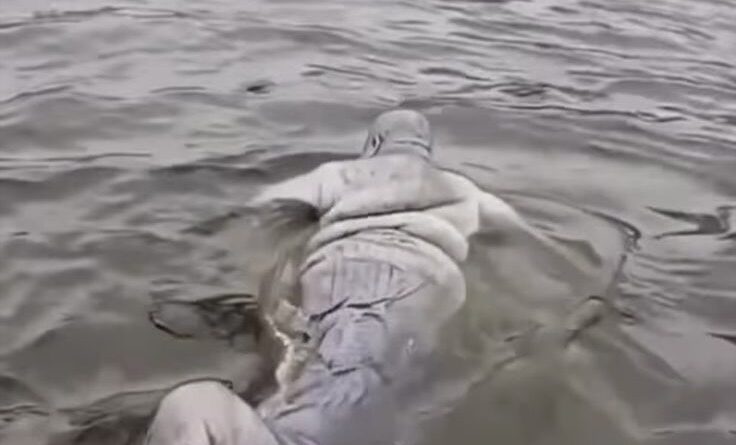21 Facts about Mermaids Scroll DOWN FOR WATCH VIDEO OMG

1. Eat a Balanced Diet
Your diet plays a crucial role in your overall health.
Eating a variety of nutrient-rich foods ensures your body gets the essential vitamins and minerals it needs.
What to Include in Your Diet?
Fresh fruits and vegetables – Provide vitamins,
minerals, and antioxidants
Whole grains (brown rice, whole wheat, oats) –
Support digestion and provide energy
Lean proteins (chicken, fish, eggs, legumes) – Help
build and repair muscles
Healthy fats (avocados, nuts, olive oil) – Improve
heart and brain function
V Plenty of water – Keeps you hydrated and aids digestion
Mermaids have always been shrouded in mystery, being so alluring, yet ever evading to the public eye. But many people claim to have seen them. Are they like the sailors of the 1800’s, tired, sick and potentially delusional? Or are they lying?
Mermaid sightings go way back. Even Christopher
Columbus wrote about seeing mermaids on his voyage.
Could mermaids really exist and what would they be like?
In this article I will answer questions about mermaids and share about mermaid history, mythology, pop culture, and media.
1. What is a mermaid?
A mermaid is an aquatic creature that has the upper body of a human and the tail of a fish, instead of legs. In legends, mermaids are depicted as beautiful women, known for their enchanting song.

2. Are mermaids real?
We can only speculate the answer to this question.
Mermaids are considered mythical creatures, but there is still the question of where the myth of mermaids came from. Perhaps there is truth to legend.
It is believed that the sailors of olden days who wrote about seeing mermaids were actually delirious from months at sea and mistook manatees for
mermaids. Manatee tails are resemblant of a mermaid tail and when you’ve gone so long without seeing a woman, you might just imagine one.

That may or may not be the case. Mermaids may seem like something out of the imagination, but the majority of the ocean has been unexplored so we can’t rule out their
existence.
There is a scientific theory that life originated in the sea and everything evolved from there, eventually to the point of creatures leaving the sea. What if mermaids are the missing link? Perhaps they are our evolutionary ancestors. While science does not confirm this, it is just something to ponder about.
3. Where do mermaids live?
This is kind of a no brainer. Mermaids live in the sea and inhabit marine areas all around the world, according to legend. But there are also stories of mermaids living lakes and rivers.
Mermaids are also common as spiritual beings, or deities.
These mermaids are more metaphysical and cannot be seen, but can be prayed to and communicated with.
Mermaids may also live in Atlantis. The Lost City of Atlantis is a fictional island that sunk and is now submerged. In some stories and movies mermaids live there.

4. What are the recorded mermaid sightings
Mermaid sightings have been reported by many sailors ano pirates throughout history. The theory is that they actually were mistaking a manatee for a mermaid, but who knows?
John Smith- There is a story that John Smith, of Jamestown, sighted a mermaid. He said she was graceful and “by no means unattractive.” It is debatable whether it is historically accurate or just the story of a writer.
Edward Teach – Edward Teach was an English pirate who sailed around the West Indies. He was famously known as Blackbeard. He was a huge man and one of the most dangerous pirates around. In a log book it is recorded that Blackbeard made an order to steer clear of a certain area
that he believed was inhabited by merfolk.

5. What are the Mermaid hoaxes?
Many people have tried to capitalize on mermaid beliefs.
People thought they could profit off selling mermaid hoaxes, tricking the public. Here are a few instances of that.
P.T Barnum- Phinnes Taylor Barnum is the founder of the Barnum and Bailey circus. He was an American showman known for promoting hoaxes. One of those hoaxes was the “Feejee Mermaid.” It was the upper half of a dried monkey sewn to the tail of a fish. This was on | display in the 1840s and created a mermaid craze in New York. Barnum teamed ap with Levi Lyman, who posed as a
Jenny Hanivers Sailors around the world in the 16th century earned extra income by creating Jenny Hanivers as novelties to tourists. They were advertised as mermaid bodies, but they were actually ray carcasses that had been dried and carved. They were debunked in 1558 by Swiss naturalist Konrad Gesner.
Mermaids: The body found- Animal Planet aired this mockumentary full of fake footage that many people believed to be real. It promoted a narrative about real mermaids being creepy humanoid creatures who live in the depths of the sea. It attacked the subject very scientifically sounding and many people were fooled.

6. Are sirens and mermaids the same?
While the word ‘siren’ is a translation of ‘mermaid’ in many languages there is a difference between the two.
According to folklore mermaids and sirens are not qui the same. You’ll fied that the aquatic humanoids in The
